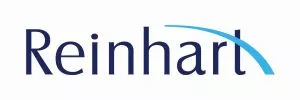- within Intellectual Property, Technology, Food, Drugs, Healthcare and Life Sciences topic(s)
On July 4, 2025, President Trump signed the One Big Beautiful Bill Act (the OBBBA) into law. As part of our One Beautiful Bill Act Analysis Series, this alert explains the expansion of the section 1202 qualified small business stock (QSBS) gain exclusion. Below is a summary of the requirements to qualify for the benefit, notable expansions provided in the OBBBA and its key takeaways.
Pre-OBBBA QSBS Requirements
Code section 1202(a) permits noncorporate taxpayers who acquire QSBS after 2010 to exclude up to 100 percent of the gain recognized on the sale of the qualifying stock. To qualify for the exclusion, the taxpayer must:
- Acquire the QSBS by direct investment in a domestic "C" corporation that uses at least 80 percent of its assets in a "qualified business" during substantially all of the taxpayer's holding period (see our prior alert here regarding a recent IRS ruling and the "qualified business" requirement),
- Hold the QSBS for at least five years;
- Limit exclusion to (generally) $10 million of annual gain per issuing corporation; and
- Invest in the stock at a time when the issuing corporation has $50 million or less tax basis in assets.
OBBBA Expands Changes to QSBS Eligibility
The OBBBA made the following changes related to the last three requirements above, significantly expanding §1202 benefits for founders, investors and startups:
- Tiered Gain Exclusion. Noncorporate taxpayers can now
exclude at least a portion of their gain on the sale of QSBS even
if the QSBS is held less than five years:
- 50 percent if held for three years;
- 75 percent if held for four years; and
- 100 percent if held for five years or more.
- Increased Annual Exclusion Cap. Eligible taxpayers are now subject to an increased $15 million annual gain exclusion (per issuer), which adjusts annually for inflation.
- Extended to Larger Corporations. QSBS now includes stock in corporations with up to $75 million in gross assets at the time of investment and adjusts the amount for inflation.
The changes above apply only to (1) sales of stock acquired after July 4, 2025; and (2) gain exclusions claimed for tax years beginning after July 4, 2025.
Key Takeaways
- Generally, these changes are intended to spur an increase in entrepreneurial activities and make investing in small businesses more attractive. Investors may consider shifting more resources to QSBS-eligible businesses to capitalize on the expanded benefits.
- While QSBS holders who acquired stock prior to July 4 are not eligible for the expanded benefits even if a sale occurs in a tax year after July 4, 2025, business owners might consider issuing additional QSBS after such date to qualify for the expanded benefits.
- Shareholders should determine whether stock held qualifies for QSBS sooner rather than later. There will be cases when a sale involves both pre- and post-OBBBA QSBS issuances and investors should try to maximize both the pre-OBBBA $10 million exclusion limit and post-OBBBA $15 million limit when possible.
The content of this article is intended to provide a general guide to the subject matter. Specialist advice should be sought about your specific circumstances.



